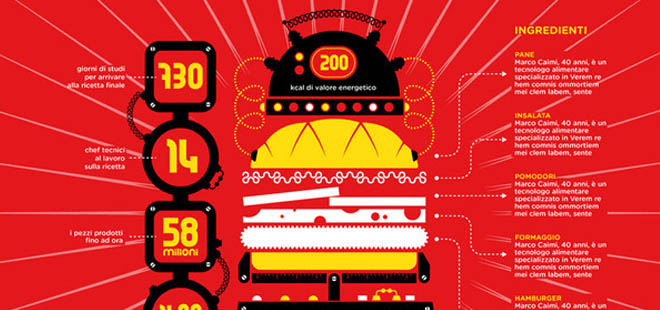iTech Review 2013: 3D Printing, Mobile Wars, Flexing Phones, etc.
A new year and new technology is eagerly busting into our lives… not that it doesn’t happen pretty much every Monday throughout the year but that title would be too long for an article and mess up the SEO in Google. There are some terrific technologies that will be more available in 2013, however, due to improvements, competition and tech wizards fueled by the desire to innovate and energy drinks galore!
Mobile OS
Google has one, so does Apple, so should Mozilla Firefox really be far behind? The popular browser company, which has felt a pinch in market share compared to its Silicon Valley neighbor Google Chrome, is cannon-balling into the smartphone pool. Early claims are it will be cheaper than Android so the Firefox OS might just have a chance if they wait until it’s ready to be released and don’t rush to market. Mozilla reports it will support rich content with HTML5 and tap into the hardware in new ways. For example, the OS might control a phone’s camera for slow motion recording or quick, successive shots.
You can bet that Apple and Google read the early reports and immediately started doing the same for their operating systems.
Tablet Wars Fall in Consumers’ Laps. Top That!
The Nook, Kindle Fire and iPad (whichever version is out this month) have some stiff competition in the new Microsoft Surface Tablet Pro. The tablet with the ultra-thin cover/keyboard combo will have the big splash in 2013 with the Pro model, which will have a legit Intel i5 dual-core processor. Experts claim the Microsoft tablet is the future of Windows computing. Swipes and gestures on the new Metro interface are a big step for mobile computing. Indeed, the pro model may even find itself replacing desktop models for business usage.
As schools talk about loaning out tablets to students, rather than a dozen text books and switching to digital books, it looks like the Microsoft surface tablet will be a front runner but let’s see how Apple responds when a hundred million or so students are involved.
Adding to the field, the Fujitsu Lifebook 2013 is a concept device designed by Prashant Chandra. It’s the result of a competition the company ran in 2011. The Transformer of tech gadgets, the Lifebook 2013 features a digital camera, smart-phone and a tablet – all of which can be detached and used individually (yes, it’s a Transformer!). Each component has its own CPU and could run on the same operating system. It’s not assured that these will be introduced in 2013 but if Fujitsu is as smart as they appear to be, you can count on the company working as fast as possible to take their lion’s share of the mobile pie.
RELATED: Crowdsourcing: Is It Effective for Your Business?
The SMARTER Car
The Massachusetts Institute of Technology (MIT) is expected to release the Hiroko in Europe and select American markets in 2013. The car is able to “fold up,” which allows several of them to occupy a typical parking space. Good news for city dwellers and those in large population centers that are seeing a greater number of privately owned vehicles.
The Hiroko’s front windshield is also the car door, which lets you park the car facing the sidewalk and step right into the pedestrian space. Its “robot wheels” allow the Hiroko to turn on a dime and its steering wheel is a wide screen LCD panel, so anyone who plays video games will pilot this like a master. Mom and dad may need new driving lessons.
The Hiroko currently has a 75-mile range and seems destined to be put into service in ZipCar-themed programs given the crowded nature of some city streets.
Phones That Bend to Meet User’s Needs
Now when you drop your personal electronic device, it’ll bounce right back into your hand… maybe.
This might be the case with bendy screen smartphones. Samsung has already shown its OLED display technology, which means this tech could be in our hands – or wrapped around our wrists – in 2013. It’s likely to be called the Galaxy Skin and will feature everything you expect in a smartphone – camera, high-res screen and a powerful processor. The technology has been around for several years and , at first was explored to give users larger screen capabilities for regular-sized cell phones. The ability to stay flexible, however, will open the average phone into an incredible experience that will end up affecting tablets and home TVs as well. Imagine one entire wall of a room as a TV. This technology will make it happen!
Augmented Reality to Go
AR is more than just playing with imaginary creatures on a web cam. It opens the user to a world of information while on the go. Maps, information on locations, reviews and the usual data the internet can provide appears right before your eyes with AR and image recognition out on the streets, Well, these light-weight specs are finally, almost by just a little bit, a reality; as close as mid-2013, according to some tech experts. Google and Vuzix are working on models that are similar to headsets, projecting an image in front of the wearer’s eye. These have appeared at tech shows around the world for the past few years, so expect competition to keep the costs down and smartphone manufacturers to get involved with the next evolution of personal mobile all connected by Blue Tooth, most likely.
Google will bring augmented reality one step closer to consumers when pre-production units for its Project Glass ship to developers early this year. The Google Glass Explorer Edition has a built-in camera, audio, and visual display that provide the user with real-time information. As developers experiment with apps, wearable computing will get its first real test.
RELATED: Has Facebook Gone TOO Far With User’s Information?
Newsweek Says Goodbye to Paper
Newsweek magazine ended almost 80 years in print with its issue dated Dec. 31, 2012, and will go all digital. The first issue of Newsweek was dated February 17, 1933 and cost a dime. A subscription cost $4 a year, according to that cover. Since that first edition, under 17 top editors the magazine says it ultimately turned out 4,150 print issues.
This is only one of the first big published magazines or newspapers to take this route. While many magazines and newspapers have created impressive digital versions, the explosion of tablets have replaced the need for paper, which, in turn, will help the planet by reducing the demand for paper, pulping and pulping customers.
It was long believed that readers preferred to hold printed publications in their hand and to be able to take it anywhere as opposed to having to sit at a desktop to read. Obviously tablets are just the new magazine that goes anywhere. Problem solved. Expect more publications to follow in 2013.
Amazon Phone
Amazon answered the tablet call with its fleet of Kindles, now it’s looking to the smartphone world.
In line with their Kindle philosophy, Amazon’s phone will likely be heavy on software integration and light on bleeding edge hardware. Amazon users will want to stay in their ecosystem of Amazon’s Appstore, Amazon MP3, Amazon Cloud Player and Kindle books.
This phone will do all of those things; likely for a low price since the company will offset hardware costs with the money consumers will spend on their stuff. Amazon will leverage its reach into every area of entertainment to make this phone a logical choice for people caught in their need for instant entertainment, news, movies and music, just to name a few, which is… everybody!
You could see these as early as the summer, 2013 or Amazon will just wait for the Christmas gift buying season, which should start right after Labor Day this year, so… summer 2013.
Leap Motion
Leap Motion unveiled its new gesture control technology earlier this week, along with videos showing the system tracking ten fingers with ease and a single digit control that promises to make your computer mouse yet another piece of computer equipment cluttering your closet. Like so many movies of the “future” (Minority Report, for one), this device promises you control as if you were a conductor of an invisible symphony and functions much like the Kinnect device for Xbox360.
RELATED: Developing Your IT Staff
The bog question is how much arm strength will be needed to work for eight to ten hours a day with your arms raised. Will users need to weight train like boxers to keep their dukes up. Will computer geeks have class A “guns” but chicken legs from sitting all day? Time will tell a few weeks after the Leap is released to the market if Ben Gay and Icy Hot sales also increase.
Big Data is Watching You!
Well, we were warned. They told us when Facebook went public that WE were the product for social media channels and our personal information was the blood needed by digital vampires. Thanks to the Internet sucking away and our ubiquitous, always-with-us and always-on smartphones, companies are capturing mountains of data about us and 2013 is the year they finally figure out what to do with it. Um… yay!
One reason companies and marketers will more readily embrace big data is because they’re finally starting to trust it. The 2012 Presidential Election was a validation of data over guesswork. This may lead people to think that is that somewhat vertical (politics) set of data can be so telling, what can all the socio-demographic-geographic-activity data they’re grabbing now tell them.
In 2013, we’ll see the fruits of that data: targeted information on all channels, new discoveries that impact all walks of life based on deep data dives. We’ll have better products, sharper and more insightful predictions (on future elections, weather; basic needs like food, water, shelter and energy). We’ll also see the rise of the Data Scientist and less needs for private investigators to follow people to gain information. Sigh!
3D Printing Comes Home
It moved into the home and retail stories this year and will explode in 2013 as the initial $2,000 price of owning a home 3D printer tumbles.
It’s true, consumers may not yet fully understand 3D printing, but the companies they know and love surely get it. In 2012, Staples announced plans to add 3D-printing services to a handful of European outlets and will expand to other countries in short order. When consumers see a 3D printer next to tall stacks of bright-white printing paper, they may start to wonder what all the 3D hype is about.
Concurrently, there will be more and more stories of 3D printing in our everyday lives and industries: at doctors’ offices, in hospitals, even at the local auto mechanic. One could, supposedly, furnish a house with the output on a 3D printer, as well as print out a “girlfriend?” Playboy Enterprises, please take note!
Featured image ©GL Stock Images




